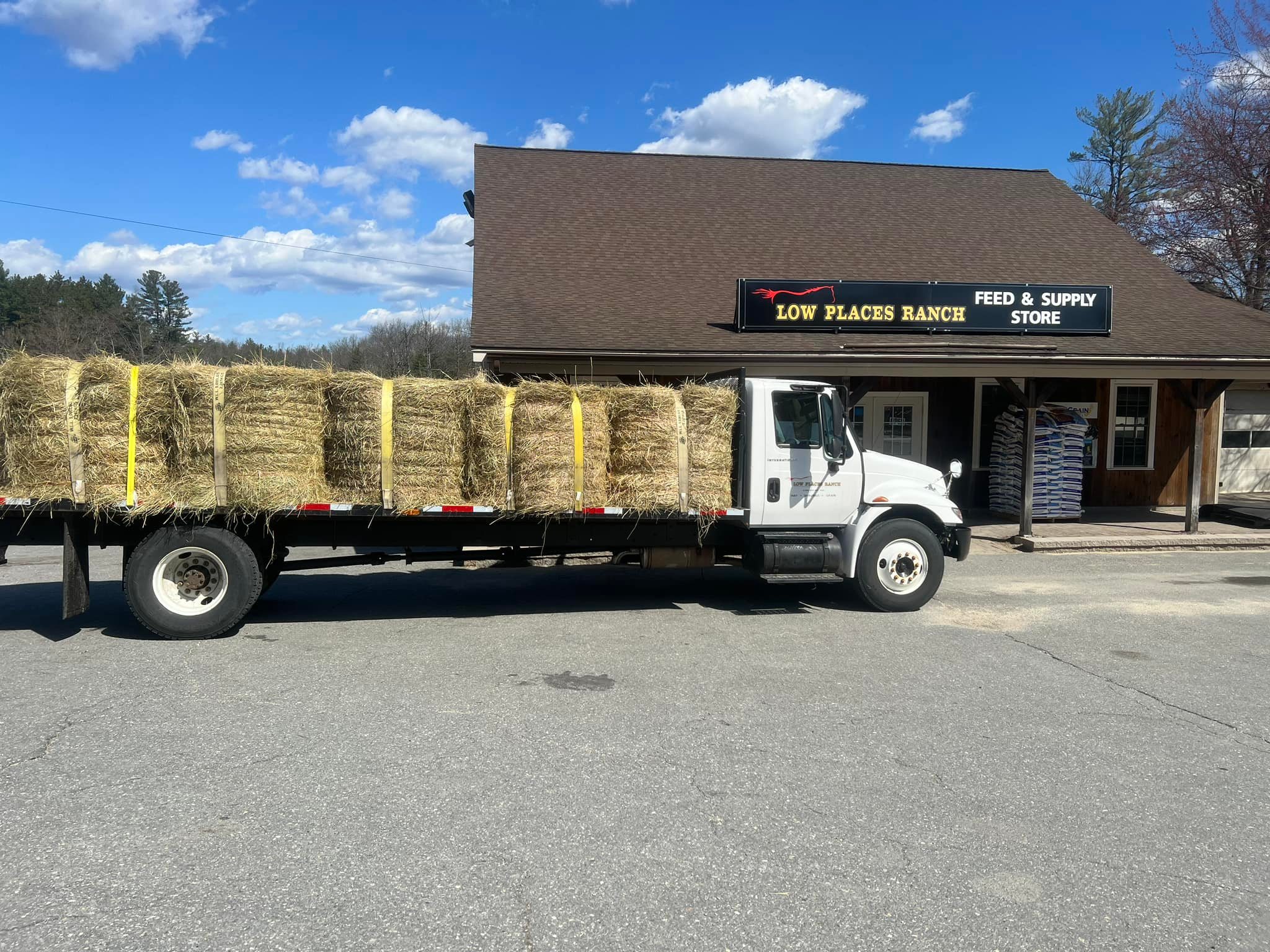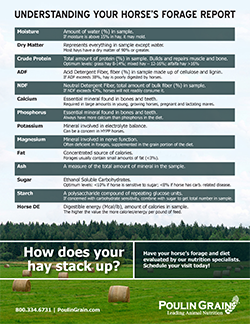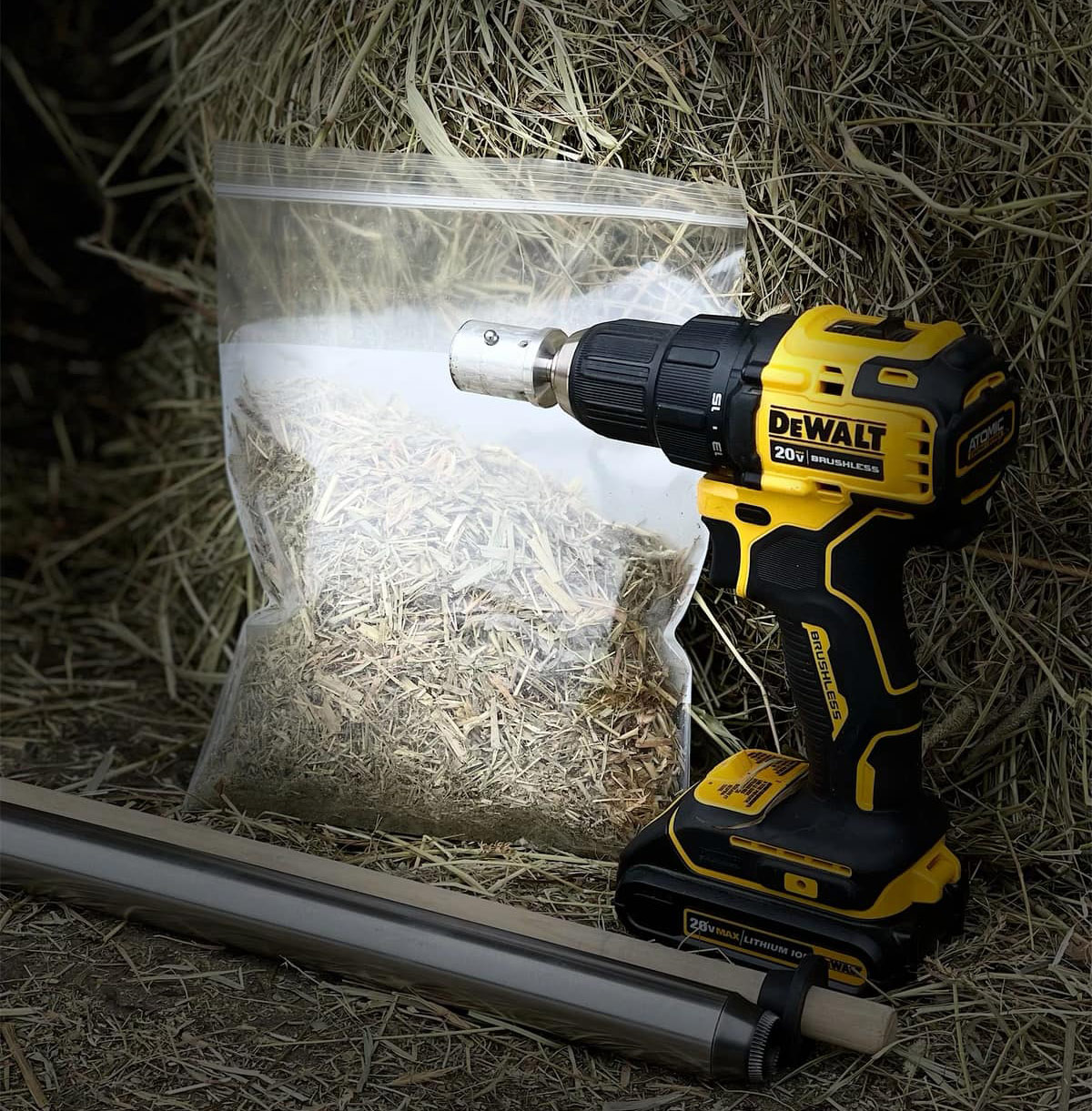WHY IS HAY TESTING IMPORTANT?
Hay is the foundation of a good nutrition program, but horse owners are often left to the sight, smell and touch of hay to “assume” the quality. Low Places Ranch believes that you don’t need to be left “assuming” when making important grain & supplement choices for your trusted companion.
Horse's Total Nutrients
90%
- Hay is the foundation of the diet & provides 50-90% of the horse’s total nutrients
- Protein & fiber values are an important factor in balancing the equine diet- and these values will vary widely by state, county, field and cutting.
- Needed to calculate digestible energy (DE) and calorie content in your hay.
- Balancing your horse’s diet – “what’s in your hay” should be telling you what feed and/or supplements to be using!
Selecting a Hay
With so many types of hay available, how do you choose one appropriate for your horse? The goal is to match the nutrients provided by the hay with the nutrient requirements of the individual horse. For example, the nutrient requirements of a pregnant mare are higher than the requirements of a mature gelding. Table 1 lists several classes of horses and recommendations for hay type selection. Note: quality hay, of any type, could be fed to any class of horse. If hay with a low or moderate nutrient content is fed to a horse with high nutrient requirements, the nutrients lacking in the hay must be supplied in the grain concentrate portion of the diet. Likewise, if hay with a high nutrient content is fed to horses with low or moderate nutrient requirements, less grain is needed to balance the diet. More important than the type of hay fed, is the amount of good quality hay fed. Feed at least 1 lb. of hay per 100 lbs. of body weight per day.
Key nutrients and information listed on a hay analysis
Moisture: the ideal moisture for hay is around 15%. If the moisture is less than 10%, the hay will be very dry and lose a lot of nutritious leaves to shattering. The hay will also not be palatable if it is very dry. If the moisture is greater than 18%, there is a risk for mold forming in the hay, and if the moisture is greater than 20%, there is a risk for spontaneous combustion.
Crude Protein (CP): For adult horses, adequate protein should be provided by the hay if the CP value on the analysis is about 10-12%. If you have young horses, horses in high-intensity exercise, or broodmares that are lactating, you will want a higher CP percent in your forage. Also note that the type of hay (grass versus legume) can impact the amount of CP; typically, legumes such as alfalfa will have higher CP as compared to grass hays. But – maturity of the plant when the hay was harvested will impact the CP.

Understanding Horse Forage Report

What else might be listed on a hay analysis?
The list above is not everything that you might find on a hay analysis. You can find out the amounts of many vitamins and minerals in your forage, which would be useful if you are balancing your horse's diet or if your horse is ill and you are trying to find out what the problem is. The analysis might also include values for ether extract fat, which is the amount of fat in a sample. Since forage is very low in fat, this number isn't one we generally look closely at when analyzing hay.
You might also see something called RFV, or relative feed value. This is generally used more for cattle nutrition but is an approximation of the quality of the hay. A value of 100 applies to good quality alfalfa hay. The higher the RFV, the better quality the hay for a ruminant's digestive system. The forage testing lab may have several "levels" of analysis to choose from, and you can read what components are included in each package and select one based on your needs.



